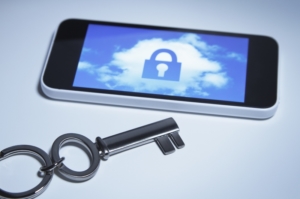Here’s Why You Need Identity, Privacy, and Device Protection
Our philosophy has always been “all security is personal”. So, whether you are a front line administrator, a CISO, or a CEO, the security of your organization begins with you and your person. If you don’t have your own personal security in order, how do you expect your business data to be secured? It starts with you.
 People are often anxious about the security of their personal information and online accounts. Cybercriminals are finding new ways to invade your privacy which is why you need comprehensive protection to keep you safe online.
People are often anxious about the security of their personal information and online accounts. Cybercriminals are finding new ways to invade your privacy which is why you need comprehensive protection to keep you safe online.
Here are some protection and privacy best practices that you can use to keep your identity and sensitive information away from prying eyes and restore your faith in technology.
Device Protection
Device protection refers to the measures you take to protect your hardware or physical devices from intruders and potentially harmful software, such as malware, adware, and viruses.
Protect Your Hardware
This may sound simplistic, but knowing where your smartphones, computers, iPads, and gaming consoles are and never allowing people you don’t know to use them are the first steps in protecting them.
Ensure that you protect your devices with a password to ensure that your photos, banking apps, and text messages stored on them are inaccessible if you lose your phone at a concert or leave your tablet in a restaurant. You’d be amazed at how many people don’t have a password in their mobile phone.
Back Up
It’s also a good idea to back up your files regularly so that your images, videos, and documents are lost if your laptop / phone crashes or is stolen. Use a combination of Google, Apple, online backup services and local external hard drives, and sync software.
Protection Against Malicious Software by Updating
To keep your device safe, you’ll also have to protect it from malicious threats. There are many ways for malware and viruses to get onto your devices, including phishing scams, suspicious websites, questionable downloads, and clicking on advertisements.
When browsing sites that seem unreliable, use caution, and apply common sense when clicking on links.
Updating operating systems, browser, and various software programs, is necessary to keep your data and devices secure. These updates are for functionality purposes, but more often are critical for security updates, when and where at vulnerabilities are discovered by researchers.
Privacy Protection
Protecting your privacy involves preventing advertisers, fraudsters, and other unscrupulous organizations from obtaining access to the information you’d prefer to keep private.
It only takes a few careful modifications to your regular browsing, emailing, and social media activities to increase your internet privacy. Just be thoughtful about where you’re going, what you’re doing, and what personal or sensitive information you may be providing.
Limit What You Share on Social Media
Consider your usage of social media. Do you upload pictures containing information that could be used to identify you? Examples of information that you shouldn’t share online include your:
- Full name
- Birthday
- Physical address
- Current location
If your profile is freely accessible and anyone can view it, you might want to think about limiting what you post online. Sadly, although your loved ones may like reading your status posts, cybercriminals enjoy them even more.
Fraudsters can learn enough about you in just a few minutes of spying to pass themselves off as you or to target you. Restrict the information you post on social media and restrict the number of people you follow and befriend to those you actually know.
In the end, be thoughtful about what you post, and how a scammer might use it against you, your family, or your business.
Use a VPN
Connecting to a virtual private network (VPN) is another great way to protect your online privacy. By encrypting your connection and keeping your location hidden, a VPN enables you to browse the internet anonymously.
Protecting your privacy with a VPN is essential when using public Wi-Fi at a library, restaurant, or coffee shop.
This is because cyber criminals typically wait around unprotected Wi-Fi networks to spy on users making online purchases or paying bills to gain access to their login information.
Invest in Antivirus Software
Spyware can also threaten your online privacy. Adware, for example, can be used to spy on your online activity to help third parties learn more about your interests and preferences and target you with online ads.
One of the best ways to block spyware is by installing a reliable antivirus application to help you identify and remove malicious software. A reliable antivirus software application to help detect, identify, and remove malware and viruses that could pose a threat to your online security. A paid subscription has multiple layers of protection versus a free antivirus.
Identity Protection
Another type of fraudulent activity to look out for is identity theft. Each time identity theft occurs, dealing with the repercussions can be challenging and may even have an impact on your finances, credit rating, and future ability to obtain loans, credit cards, or mortgages.
Protecting your personal information with care is one approach to keeping your identity safe online. Never provide anyone your Social Security Number via email unless it is absolutely necessary, and you have verified the sender’s identity.
Investing in identity security services that monitors the dark web and notifies you of any suspicious activity that might point to identity theft is a good idea.
Consider getting a credit freeze which locks on your credit report and prevent unauthorized counseling, opened in your name.
Here are some examples of identity theft:
1. Forging an Identity
The most frequent form of identity theft is when a thief takes a victim’s Social Security number and uses it to create a new false identity.
2. Creating New Accounts Using Someone Else’s Credentials
When a scammer successfully obtains financial data and personally identifiable information from a user, they can open new accounts such as utility accounts, credit cards, and more using the victim’s good credit rating.
3. Taking Over Someone Else’s Account
Account takeover occurs when a fraudster takes the victim’s account login information and adds themselves as authorized parties, giving them access to the victim’s banking facilities.
Fortunately, this type of fraudulent activity is steadily decreasing due to the widespread use of EMV chip readers.
4. Medical Identity Theft
Medical identity theft occurs when fraudsters pose as patients to access certain prescribed drugs and have their medical care covered by the victim.
5. Corporate Identity Theft
Corporate identity fraud occurs when a criminal tries to issue new lines of credit in the name of a company, sends clients fake bills, and then takes the payments themselves. This type of identity theft is most common in small businesses.
A cybercriminal may still manage to obtain your personally identifiable information even when you follow all the rules.
When a security breach occurs at an establishment with your personal information, you’ll need to find another way to keep your information and banking accounts safe.
Protect Yourself
Considering how many ways there are to target users online, it should come as no surprise that many are uneasy about their safety when surfing the net. Fortunately, you can safeguard your devices, protect your identity, and keep your browsing history away from prying eyes by installing reliable antivirus software.
Keep up with the latest developments, and if a corporation that stores your information is the target of a cyberattack, take swift action to protect your identity and safeguard your account.

 Tracking Cell Phones: The Legal Stuff
Tracking Cell Phones: The Legal Stuff  On top of this, any of these devices can be lost, misplaced, or stolen. Since its extremely likely that your staff are using these devices for their work, think about all of the information that could be on there about your company…and it happens because Joe in accounting left his cell phone on the counter at a local coffee shop, and a hacker picked it up.
On top of this, any of these devices can be lost, misplaced, or stolen. Since its extremely likely that your staff are using these devices for their work, think about all of the information that could be on there about your company…and it happens because Joe in accounting left his cell phone on the counter at a local coffee shop, and a hacker picked it up.
 Thots and prayers. Thots and prayers. Thots and prayers. Thots and prayers.
Thots and prayers. Thots and prayers. Thots and prayers. Thots and prayers. Scientists have looked at the rate of homicide in more than 1,000 species, and they noticed something interesting: The rates of these lethal acts are similar, which means that evolution of each species can give us a good idea of how violent each species really is.
Scientists have looked at the rate of homicide in more than 1,000 species, and they noticed something interesting: The rates of these lethal acts are similar, which means that evolution of each species can give us a good idea of how violent each species really is. However, that doesn’t mean that this tech savvy generation is always right. In fact, a new study shows just the opposite when it comes to internet safety. Though, they can also teach us a few things and are definitely up to speed on the value of “authentication” (which leads to accountability).
However, that doesn’t mean that this tech savvy generation is always right. In fact, a new study shows just the opposite when it comes to internet safety. Though, they can also teach us a few things and are definitely up to speed on the value of “authentication” (which leads to accountability). New advances in mobile technology and networking have given remote workforces a boost, and while policies for most remote workers generally depend on manager or company preferences, most businesses must accommodate a mobile workforce on some level…and here’s where the challenge lies.
New advances in mobile technology and networking have given remote workforces a boost, and while policies for most remote workers generally depend on manager or company preferences, most businesses must accommodate a mobile workforce on some level…and here’s where the challenge lies. To accomplish their goals — ranging from propaganda dissemination and recruitment to launching attacks — jihadists must skillfully leverage various digital technologies that are widely advertised and freely accessible online.
To accomplish their goals — ranging from propaganda dissemination and recruitment to launching attacks — jihadists must skillfully leverage various digital technologies that are widely advertised and freely accessible online. Apps have “permissions,” meaning, they can access private information such as your social calendar stored on the phone, appointments, anything. Go to the
Apps have “permissions,” meaning, they can access private information such as your social calendar stored on the phone, appointments, anything. Go to the 























